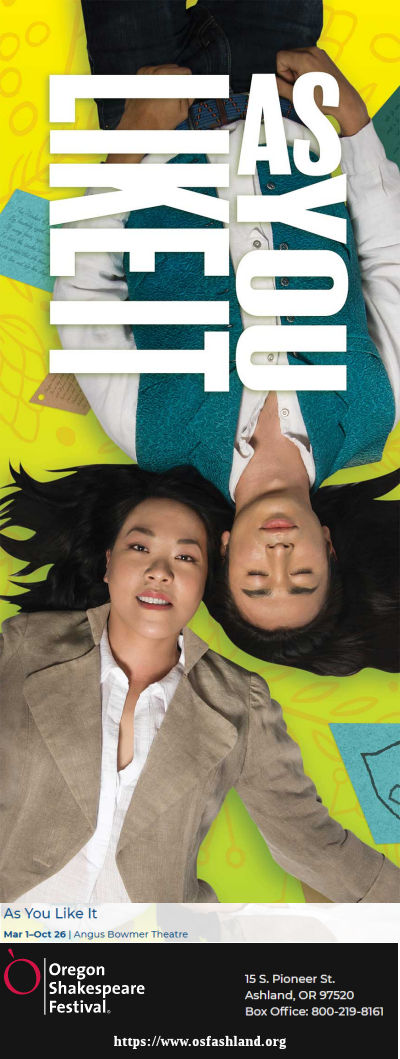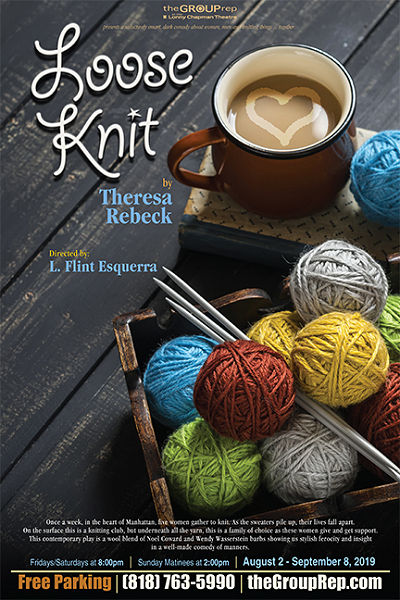 Last night, I went to the Alumni Shabbat at Gindling Hilltop Camp. Actually, to be precise, I want to Gindling Hilltop Camp (Channel Islands), as opposed to (Malibu). It was very much the same thing, only different. As, except for one or two readers, you weren’t there, I’d like to share a few observations and gleanings.
Last night, I went to the Alumni Shabbat at Gindling Hilltop Camp. Actually, to be precise, I want to Gindling Hilltop Camp (Channel Islands), as opposed to (Malibu). It was very much the same thing, only different. As, except for one or two readers, you weren’t there, I’d like to share a few observations and gleanings.
As background: The distinction between (Malibu) and (Channel Islands) was driven by a singularity, a point in time that changed some things but not others. The physical facilities that comprised the camps I grew up at are (for the most part) only in memory now, thanks to the Woosley Fire in Malibu, and the subsequent mudslides that destroyed them. But the camp itself is still there: both in the land that is resting and recharging, and the people that have committed to keeping the ruach (spirit), energy, values, and feeling alive. What the people are creating isn’t just a keepsake flame; it is camp at a new venue, the beautiful facilities of Cal State Channel Islands near Camarillo, CA. I was curious, as I drove out to the campus, as to how this would all work.
Camp @ Channel Islands
For the summer of 2019, and hopefully the summers of 2020 and probably 2021, Wilshire Blvd Temple has rented a goodly portion of the southern section of CSU Channel Islands. For WBTC, this has provided the camps a respite home. On the other side of the equation, it has provided CSUCI a windfall in terms of a large rental tenant at a time when the campus is historically under used, a tenant that has improved some areas of the young campus (as a college campus) making it better for the student population in the short term future. In doing this, the model has been the temporary relocation of URJ Camp Newman to CSU Maritime Institute after the Santa Rosa Tubbs Fire, now in its second year while they rebuild the Porter Creek Campus. I think those of us who that have been to Channel Islands hope this summer established a strong relationship between WBTC and CSUCI that will last over the rebuilding years.
You might be wondering how the two camps, one facility, works. I would best describe it as a virtual LAN (VLAN) or a virtual machine: two distinct entities sharing a single physical medium. The camps are of distinctly different size (350 for CHK, 180 for GHC), with different staffs, except for some shared specialists. Times are staggered, so that while one camp is in one part of campus, the other camp is in a different part of campus. There are different dinner seatings, different service seating. But the shared facility allows distinct time for the two camps to come together and form One Camp.
Touring the new facilities, I learned there was a conscious effort to bring pieces of Malibu to Channel Islands. The benches in the chapel are from the CHK chapel; the bima and arks are the ones that survived the fire at both camps. There are benches in “the Zone” from the overlook at Hilltop. The art supplies were rescued from Omanut (Arts and Crafts) at Hilltop, IIRC the poles supporting the shade tenting in the zone came from Kramer. The prayerbooks are from both camps, and contain the pictures and memories of what was. These little pieces provide the conduit from the old to the new, a pathway and connection so that the old energy can continue to flow.
But Channel Islands is a new space, and the Camps have had to invest significantly to transform portions of campus into camp. If you look at the map of the the Camarillo campus, camp has taken over the southern end. The “cabins” are the space marked SRV (Santa Rosa Village), and the quad between LIN (Lindora) Hall and the future Madera Hall (not labeled) is the chapel. The open space between the existing SRV (opened in Fall 2016) and LIN/Madera is “The Zone”, which was a gravel-covered empty space when the camp leased the facilities. The camp has improved the space with grass and wood chips, erecting a shade structure held up by poles from the old ropes course, together with an Israeli dance space (removable sports floor), a volleyball court, a ga-ga pit, benches, and other improvements. The camp has also made improvements in the area shown as Portraro Fields, where a removable climbing structure and ropes course has been built.
Other space used by the camp include recreational student space such as lounges in SRV, the campus dining facility at ISL (Islands), the ability to use the quad in front of the biology building ALI for Shabbat dancing, improved gymnasium facilities and such. This has allowed for electives (excuse me, chugs) not seen at camp before: cooking, mountain biking, gardening, and such. The new beach facilities in Ventura allow access to the Channel Islands Ranger Station, creating new opportunities for interaction with nature education. Sandy Strauss would be proud.
The cabin facilities are also a step up from Malibu: Utilizing the new residence halls, each “cabin” consists of four rooms: two for camps with four campers each, a room with the counselors, and a “clubhouse” chill space. The mattresses are thicker, and they even have mini-fridges. I was discussing with a staff member how different things were from when camp first started in the 1950s. Back then, had this happened, camp would be on the original ground space, with “roughing it” tents, trucked-in porta-potties and showers, and rudamentary outdoor cooking facilities while the campers worked to rebuild. In today’s camp environment, roughing it is thicker mattresses and mini-fridges. Times change. I’ll note that both camps share the dorm space, with Hilltop on the top floors because … well the camp is Hilltop, duh. Counselors have access to the elevators, but campers get the stairs.
Access is an interesting concern, especially for parents of young one concerned about camp sharing space with an active college campus with other tenants. From this older camper’s eyes, security is actually stronger at CSUCI. At Malibu, security was very much physical isolation. At Channel Islands, buildings tend to be locked, with counselors needing key cards and PINs to access. This means that campers are escorted to locations, with an adult always present. There is both camp security personnel and campus police. All camp personnel have identifying wristbands worn at all times; they question folks in camp areas without wristbands. An on-campus police presence means that emergency response is actually much closer. There is also increased use of technology to stay in communication with staff. There’s also not strong outside advertisement of the nature of the camps. All of this is important in these heightened times of security concern. As I noted, you feel safe on campus.
As I’ll discuss in a minute, rebuilding Malibu will take years. Until then, each summer, WBTC will move and rebuild (as necessary) the current rental facility, do the summer, and wipe the slate back to what it was, leasing other facilities for programs through the year. A key question is whether CSUCI will want the relationship with the camps to continue. After all, CSU Maritime held Camp Newman to two years; they must be back at Porter Creek in 2020. My gut tells me they will. Reading the 2007 campus master plan, the 2014 CSUCI 2025 Vision Plan and accompanying slide show, and the overview thereto, it is clear the campus has ambitious plans to expand within their limited footprint. The overview notes: “To support this development, the next major capital expansion phase must be launched to adequately support the programmatic and operational needs of the campus by 2025. With the expectation that very little to no State capital funds will be authorized for new construction over the next decade, the campus must explore alternatives to support critical capital expansion. A comprehensive capital development strategy is therefore critical to allow CI to adequately meet its educational mission over the next decade.” as well as wanting “a concept plan that may potentially include engaging external partners to leverage resources in new and innovative ways to benefit both the University and the CSU.” The windfall from WBTC renting the space could be one of those external partner interactions that benefit future growth. The camps can provide temporary improvements to make that space better for the school-year student population; the space of “The Zone” and possibly the SH2 parking facility seem slated to become the San Miguel Village in the mid-term timeframe (which in 2014 was predicted to be now, but looks more likely to be the 2022-2024 timeframe). This might also impact the 1934 courthouse building (Madera Hall), currently vacant, at the south end of the chapel, which at one time was scheduled to be remodeled, but is also rumored to be scheduled for demolition.
But that’s enough of the digression from this amateur historian. I think that overall, Camp at Channel Islands was, well, camp. Kids are resilient, and it is the people and the programs that make camp special. The basic structure of the programs remained, the activities remained the same, and most importantly, the staff gives the same enthusiasm and love to the campers, imbuing them with the same spirit as always.
To this old timer, especially one steeped in camp history and lore, it isn’t quite the same pioneer spirit. The first two years of its existence, camp was in rental spaces that they remade as temporary JEWISH spaced. The menorah in the background at the CHK chapel dated from the 1951 camp — it was built by campers and trucked to CHK. Campers lived in rudimentary camping spaces, as was done in the 1950s. Even in the first days of Hilltop, campers roughed it, clearing brush, being trucked for showers. That’s romantic history, but one not allowed by today’s legal and safety landscape, nor one likely to be tolerated by today’s parents. What WBT has created at Channel Islands is a truly remarkable bubble: moving the spirit of Malibu to a temporary facility. I will note that campers this year built a replica of the camp’s iconic menorah. It is movable, and perhaps one day will grace the chapel at the rebuilt CHK.
In terms of the alumni night itself: we had about 20 people there for Hilltop, including two friends from my days at camp (1969-1979). There were about 100 attending for CHK, from what I understand. That mirrored the attendance of campers: Hilltop was a younger session right now, and those have been undersubscribed this summer, especially by the girls. Kramer was an older kid session, and those have had strong attendance. In talking with staff, we surmised it might have been concerns about younger kids on a college campus, or not having the same camp feeling. From what I saw, neither should be a concern, and hopefully parents will bring their kids back next year. I understand that Newman By The Bay had a similar problem their first year of temporary relocation.
But What of Camp in Malibu?
For this old-timer, that was a key question of mine. I had been thinking before the Shabbat of how the land in Malibu must feel, devoid of the spirit of children that it had felt for almost 70 years. It must be quite lonely. Here’s what I learned.
After the fires, almost all of the buildings were destroyed. To my understanding, what was left at Kramer was the “new” Dining Hall, the conference center behind it, and the infirmary/office structure. The pool and amphitheater remained, but no buildings. The Piness bathrooms at the top of the hill in the boys cabin area, and one girls cabin. Most of what survived was actually already scheduled to be demolished before the fire as part of a central camp remodeling that was nearly funded, as the “new” Dining Hall was already outgrown, and the other buildings were showing their ages. At Hilltop, much of the Omanut / Pool / Roth / Lookout structure survived, although one fence burned and the pool equipment exploded. At both camp, benches and a few items in the chapels survived.
The fires of November may have destroyed buildings, but the floods of the subsequent winter reshaped the land. At CHK, portions of Yerba Buena and the cliffs below flowed into chapel; the CHK benches were rescued for the Channel Islands Chapel. The creek was rerouted, taking out what had been the Nature area. Areas were covered in mud and debris fields. Embankments molding the creek were washed away. It sounds like the most significant mud damage was at CHK; I haven’t heard of significant mud flows at GHC — most importantly and surprisingly, the road to Hilltop survived unscathed.
I asked if there was drone footage or images for those of us that want to see. WBTC has them, but is controlling the story as the events were extremely traumatic to many children and adults. Although there are some of us detached enough to handle them, the camp staff’s job is to protect people and rebuild carefully. I can appreciate that care and concern.
I learned that campers from the older leadership sessions visited Malibu briefly this summer. They weren’t there to rebuild at this time, but more to celebrate survival. I heard of story of dancing on the plaza at Hilltop, with the campers providing the music with their voices. I’m sure the spirit of the land appreciated the joy, and it helped the land recover.
Given this, recovery will be a long process — I’d guess Malibu won’t be back until at least 2022. There will be rethinking about how to rebuild smartly — both for fire resistance, the new size of camp from when it was originally built, and how to make the hodgepodge that was there into something purpose-built to serve the community. I’d imagine deep consideration on thinking the flow through camp to keep it safe in the future from fire and flood. Plus all this work must go through the California Coastal Commission, an entity that did not exist when the primary structures of camp were first built. What we can do until then is support the camp with our spirit in alumni groups, donations to camp recovery, and spreading the word that #KramerNeverStops and #HilltopNeverStops, and that folks should send their kids to camp at Channel Islands.
There also seems to be collection of camp history online. I learned of a site, One Camps, that has collected music and history and cheers and all sorts of stuff; I plan to explore it further.
Cal State Channel Islands
This was my first time visiting the campus, although I have a cousin that is a Computer Science student there (at least I think he’s still attending there). I found it to be a beautiful campus. Most of the new buildings have been constructed in the style of the 1930-1940 hospital buildings, and the only way to tell them apart is the depth of the windows. I took time to drive around most of the space. I think there ground footprint is larger than CSUN. There appear to be some buildings are are still unused — possibly due to their historical usage, asbestos remediation, or design in relationship to campus needs. Most of the older buildings appears to be on the southern portion of campus.
In researching online, I saw a few stories on the history of the facility that became CSUCI, with accordant rumors therewith. As I scientist, I know those rumors are bunk. As a historical romantic, I can’t help but think that any negative spirits that might have remained at the transition back in 1998 have been balanced and negated by the joy of learning that occurs in the halls of CI, and the happiness of children and the good times and good memories being created. Knowledge is light, and light always dispels darkness.
 August: A month that has seen lots of highway work, from repaving to rerouting, as agencies take advantage of the hot summer months to get work done. For me, it has brought exploration of northern California, driving some highways I’ve never been on before. But all along the way, I’ve been collecting headlines for your enjoyment:
August: A month that has seen lots of highway work, from repaving to rerouting, as agencies take advantage of the hot summer months to get work done. For me, it has brought exploration of northern California, driving some highways I’ve never been on before. But all along the way, I’ve been collecting headlines for your enjoyment:

 Yesterday was a museum day for us in Klamath Falls, as we visited
Yesterday was a museum day for us in Klamath Falls, as we visited 
 As I mentioned in my last post, we have an adage: hobbies don’t stop just because you’re on vacation. That means, when we go on vacation, that we’re stopping at local yarn and quilting stores, we driving the highways and byways looking for interesting history, and of course, we’re seeing local theatre whenever we can. I also mentioned that we were recently in Klamath Falls, and decided to meander down the road (Oregon 66, to be precise) to Ashland Oregon to
As I mentioned in my last post, we have an adage: hobbies don’t stop just because you’re on vacation. That means, when we go on vacation, that we’re stopping at local yarn and quilting stores, we driving the highways and byways looking for interesting history, and of course, we’re seeing local theatre whenever we can. I also mentioned that we were recently in Klamath Falls, and decided to meander down the road (Oregon 66, to be precise) to Ashland Oregon to 

 Going in, you have to understand that my wife is into the fabric arts: knitting, needlepoint, cross-stitch, sewing, quiliting … almost anything other the crochet. Her obsession for the last few years has been knitting, and she’s been involved with a number of knitting groups, the longest being a group that knits over at
Going in, you have to understand that my wife is into the fabric arts: knitting, needlepoint, cross-stitch, sewing, quiliting … almost anything other the crochet. Her obsession for the last few years has been knitting, and she’s been involved with a number of knitting groups, the longest being a group that knits over at  Generally, the segments that involve the women in the knitting group are the most interesting, where t hey are talking and interacting. Especially in Act I, the scenes involving Miles are cringe-worthy — not due to the performances, but just the nature of Miles and how much of a creep he is set up to be. Hang in there with respect to those scenes, for the Miles character finally makes sense in the final scenes on the show (although he still remains slime, just like his buddy “The Donald”, who is also mentioned in the show). Note that this play was written in the early 1990s, when men who behaved like this towards women (entitled, thinking their wealth allowed them to do anything) were common and accepted, The behavior that seemed perhaps innocuous then seems very problematic now, and is perhaps the most dated aspect of this play.
Generally, the segments that involve the women in the knitting group are the most interesting, where t hey are talking and interacting. Especially in Act I, the scenes involving Miles are cringe-worthy — not due to the performances, but just the nature of Miles and how much of a creep he is set up to be. Hang in there with respect to those scenes, for the Miles character finally makes sense in the final scenes on the show (although he still remains slime, just like his buddy “The Donald”, who is also mentioned in the show). Note that this play was written in the early 1990s, when men who behaved like this towards women (entitled, thinking their wealth allowed them to do anything) were common and accepted, The behavior that seemed perhaps innocuous then seems very problematic now, and is perhaps the most dated aspect of this play.
 The musical Avenue Q gave a word to most Americans for a concept they knew well. It was a concept that drove almost all comedy, and certainly comedic farce. It wasn’t a comedy driven by jokes or puns, or almost anything that was said. It was schadenfreude, the experience of pleasure, joy, or self-satisfaction that comes from learning of or witnessing the troubles, failures, or humiliation of another.
The musical Avenue Q gave a word to most Americans for a concept they knew well. It was a concept that drove almost all comedy, and certainly comedic farce. It wasn’t a comedy driven by jokes or puns, or almost anything that was said. It was schadenfreude, the experience of pleasure, joy, or self-satisfaction that comes from learning of or witnessing the troubles, failures, or humiliation of another. Last night, I went to the Alumni Shabbat at
Last night, I went to the Alumni Shabbat at 